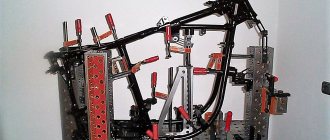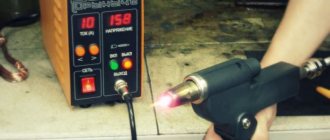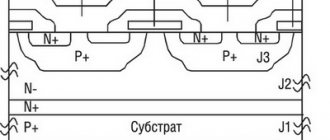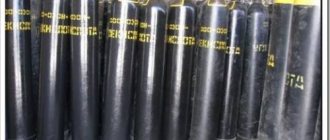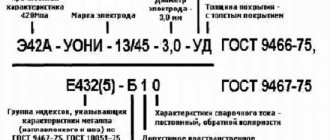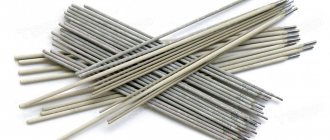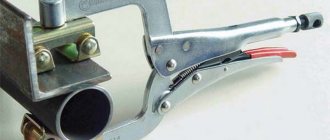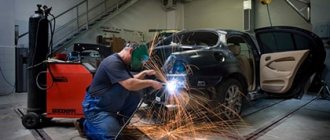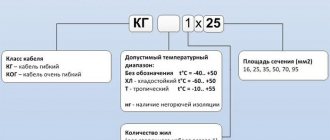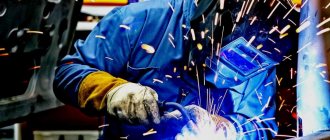If thousands of welds with repeating technology are required on identical joints, then a welding robot is installed. This is a programmable device that is capable of performing cyclic welding manipulations at high speed, and without human intervention. What are these machines made of? What types of these installations are there, and how do they work?
Welding robots and their design
An automated robot welder is a unit mounted on a base. The latter has a hinged rotary mechanism that allows you to rotate the body and direct the device in the desired direction. Attached to the base:
- current source;
- converter;
- feeder;
- display with programming remote control;
- cylinder with inert gas.
The robotic welding complex has a controlled “arm”. It can bend and unbend in three to six places (depending on the model), and it performs all working manipulations. At the end of the “arm” there is a welding torch into which melting wire and shielding gas are supplied.
To start the work cycle, the installation is configured for a specific joint and seam. Data is entered on the welding length, current strength and execution speed. Since the welding robot does not have vision, it is necessary to designate the tools and devices surrounding it, specifying the coordination along which it will move.
Welding robots can perform certain operations on their own tooling, where human participation is required for laying the product and fixing it. Welding work is carried out automatically. When performing operations on a conveyor where large objects are fed and the connection does not require additional clamps, human intervention is eliminated.
Price of welding robots from IRS company
In order for our specialists to be able to make you a specific, well-developed proposal for the cost of RTK, which will help you really increase productivity and income, contact us:
- by phone.
- or by mail
The price of a welding robot, or rather a robotic system, depends on the specific task and can only be limited by your imagination. Speaking of simple basic solutions, the budget for such systems can start from 78,000 Euros including VAT. We also sell more complex systems.
Equipment delivery time: 1 week.
Terms of payment:
The prepayment is 50% of the contract amount, after the preliminary launch of the equipment, training and signing of the pre-acceptance certificate - 40%, after putting the equipment into operation - 10%.
Guarantees:
All supplied equipment is covered by a warranty of 19 months from the date of signing the equipment commissioning certificate.
This offer is valid until 12/31/2017
Laser welding and cutting.
As a result of research on the volume of use of industrial robots in production, it was revealed that almost 20% of all industrial robots are used in welding processes, and almost half of this number of robots work in the United States. The use of a robot to automate the welding process is inevitable if the task is to produce a welded joint quickly, efficiently and with a high level of quality.
Compared to manual or semi-automatic welding, higher quality is achieved in those products where argon arc (TIG, MIG, MAG) or spot welding (RWS) using an industrial robot welder was used.
Today, robotization of laser welding (LBW) technology is becoming increasingly important. It makes it possible to focus the laser on a point varying from 0.2 mm, while minimizing the impact on the product, achieving high accuracy and excellent welding quality. The focusing length reaches up to 2 meters, which ensures remote welding and increases the range of use of the welding process, and therefore increases the productivity of product manufacturing.
Laser welding is widely used in aircraft manufacturing, automotive manufacturing, instrument making, medicine, etc.
Using industrial robot welders, that is, by switching to automatic welding, time is saved several times. This is achieved through the modernization of welding equipment, which ensures a fast assembly cycle of the structure. Using robotic systems, it is possible to combine processing actions, for example, you can weld by changing the torch or welding modes without reinstalling the part.
The best industrial robots in welding production
Fanuc CR-14iAL
The Fanuc CR-14iA/L collaborative robot is capable of lifting loads weighing up to 14 kg and moving them at a distance of no more than 82 cm. The welding robot is able to work among people without additional fences or sound sensors. Because when it comes into contact with a person, it stops. This became possible thanks to the integration of a contact safety stop sensor into the design.
The flexibility and small dimensions (296.5 ⨯ 235 mm) of the elongated body allow the robot to perform work close to its base, which is especially important in small spaces.
It is easy to program the model manually using the iHMI control panel.
Fanuc CR-15iA Collaborative Robot
The Fanuc CR-15iA robot operates using the FANUC Force touch sensor, which is built into the base of the equipment. The following sensors are responsible for object recognition: spatial 3D FANUC and Vision FANUC.
You can program a robotic device in various ways:
- using FANUC Teach Pendant or standalone device;
- using FANUC Hand Guidance, which can be used to guide the robot through motion points or along a specific path required to complete a task and record the path.
The CR-15iA is very compact, making it ideal for material handling applications. The maximum load capacity of the device is 15 kg. Vertically, the device can lift parts and boxes to a height of 2.41 m, horizontally - stretch to a distance of 1.44 m.
Hanwha HCR-3A Collaborative Robot
The Hanwha HCR-3A robot is suitable for performing tasks with low weight (no more than 3 kg). With the help of this robotic equipment, various types of repetitive actions are easily automated, such as: checking, assembling, polishing, storing and palletizing (laying) objects; screwing parts; machine maintenance.
Due to the large number of operations performed, the robot can be used in various industries:
- welding production;
- metallurgy;
- microchip production;
- assembly and packaging in warehouses;
- casting;
- paint and varnish production.
The model is manufactured in accordance with safety standards that allow the use of a robotic device for joint work with a person. The presence of a large number of sensors allows you to create a comfortable working environment for employees, since when the slightest collision with any object is detected, the robot stops instantly.
Robotic arm for welding Kuka WTG 1200
The Kuka WTG 1200 automatic welding machine is equipped with arc welding technology. The overall dimensions of the robot are compact – 1.2 ⨯ 0.8 m. The maximum load capacity of the equipment is 6 kg.
The high speed of the system made it possible to implement the device in various industries. Controlling the robot is very simple; it is carried out using a remote control. The device can operate in manual or automatic mode.
Workers are protected from injury. The machine remains automatically locked and cannot start as long as the doors to the material storage room are open.
Application of robotic machines
Implemented projects in the field of production robotization
Organizing a flexible production process is a profitable way to improve economic, environmental and general performance, improve product quality and ensure occupational safety, and is your reliable partner in creating efficient modern production!
Robotic welding using industrial robots has many advantages over manual welding. Please note that the cost of purchasing a robotic complex can start from only 50,000 euros, which is why production robotization is becoming more and more interesting and attractive for small businesses.
Welding robots provide higher quality welds and higher productivity by optimizing welding parameters. Simple quality assessment provides the ability to record and monitor process parameters. Due to the reduced amount of metal spatter, as well as due to the uniformity of the seams, additional work after welding (mechanical cleaning) is often not required, which allows enterprises to additionally save about 30% of all production costs.
The use of additional robot-controlled axes ensures very fast positioning to the ideal welding position and therefore costs can be kept to a minimum. On the one hand, the inhaled amount of toxic metal vapor and harmful welding fumes is minimized, on the other hand, the physical stress of handling heavy components can be reduced, as well as the time required to perform monotonous welding tasks.
In Europe, they have long been increasing productivity through non-stop round-the-clock work, using robotization of most technological production processes.
The use of automation in foundries and forging shops is due to the fact that such complex operations as: unloading heavy forgings, casting blanks, subsequent cooling, loading into press dies, etc. physically difficult for a human, but not so for a robot.
Metalworking processes using robots.
In addition to welding and secondary activities, robots can be used directly in the machining processes themselves, that is, they can serve as an alternative to the machining equipment itself.
Industrial welding robots are also used for such types of work as cutting metal using plasma, laser or waterjet cutting. Robots allow you to perform three-dimensional cutting using a plasma torch, which is important for procurement operations when producing metal structures.
Watch about copters: Robot trains all episodes in a row without stopping, watch online
Using industrial robots, it is possible to make various cuttings using laser cutting in three-dimensional space, which is a replacement for a three-dimensional laser complex.
This technique is well used in the automotive industry and is quite suitable for trimming the edges of products after they have been stamped or molded.
Using waterjet cutting, you can process almost any material, since this type of cutting of materials does not have a thermal effect. Therefore, robot waterjet cutting is widely used to cut various holes.
In the above technologies, the control program for an industrial robot is generated in a special software environment, which allows you to automate the process starting from the design of a part, debugging the technological modes of part production and obtaining a control program for an industrial robot with subsequent translation of the program directly to the technological equipment.
Pipe bending.
Industrial robots are used for pipe bending.
High speed is one of the advantages of using a robot in this process. In addition, you can process a product with parts already attached to it, combining the bending process with loading or unloading of the product by the same robot. This advantage is actively used in the automotive industry and the production of metal furniture and other industries that use mandrelless bending.
The advantage of robotics is its flexibility of application and the ability to be used in an almost unlimited number of processes. For example, in the aircraft manufacturing industry, in order to improve quality while reducing manual labor, robots are beginning to be used in the processes of riveting, fuselage skin, laying out composite materials, and for various work in confined spaces.
In Russia, the use of robotic welders is still limited. Thus, in the pre-crisis year of 2007, up to 200 robotic systems were introduced with a total number of about 8,000 industrial robots throughout the country. For example, over the same year, about 34 thousand were introduced in the USA, 43 thousand in Europe, and 59 thousand robotic systems in Japan.
At the same time, in contrast to stationary CNC equipment, a robot is a more widely functional system, focused on improving the quality and productivity of production and minimizing manual labor, ultimately leading to a positive economic effect and increasing the competitiveness of the enterprise.
Continuation.
For the production of stamped products, where a repeating type of connection is used, welding robots are often installed. Thanks to the programmability, they are able to accurately place straight, circular and circular sutures.
Arc welding in these devices is also used for curved seams of any complexity. Unlike the mechanical templates along which the head moves in other welding machines, robotic welding moves the axes and torch electronically. This has found wide application in mechanical engineering and machine tool manufacturing.
Types of robotic welding machines
This type of industrial equipment is extremely in demand in our time, as it allows us to solve a number of problems facing product manufacturers with the continuous production of parts. Equipment of this class is equipped with process controllers with time-tested circuit solutions that ensure uninterrupted and high-quality welding of parts and entire assemblies. At the same time, the positioning accuracy reaches up to 0.08 mm, and the significant reach of the manipulator up to 2000 mm allows you to weld fairly large parts.
Specialized software makes it possible to quickly reconfigure the production process and support multi-axis rotation of the manipulator. The most popular models of welding robots include the following devices:
- relatively inexpensive welding robots Fanuc AM-0iA made in Japan;
- affordable German welding robot Kuka KR5;
- robotic welding unit Panasonic TA1400G2;
- OTC equipment (Almega AII-B4);
- Motoman EA 1400N equipment.
The software of these units allows you to reconfigure them into plasma cutting mode along a given trajectory with preliminary marking and chamfering, as well as to carry out cleaning of joints and other preparatory operations. The equipment set, in addition to the control unit, includes devices for positioning and precise fixation of workpieces, as well as the necessary rotation at different stages of welding work. The human factor and, accordingly, the risk to the welder’s health are largely eliminated from the production process. The versatility of the robots allows for spot, electric arc and argon arc welding both in active and inert environments, as well as submerged arc welding.
It is important that the use of robotic technology guarantees exceptional accuracy and quality of work with minimal costs for training a specialist operator, purchasing equipment and components.
High-tech welding robots include a manipulator capable of lifting parts weighing from 3 to 20 kg and six-axis rotation, a controller with a control panel and a welding source. The delivery set includes software designed for the ordered welding type and workpiece size, as well as a set of torches, connecting cables and hoses. In addition, manufacturers guarantee the supply of training courses for welding and workflow programming.
Loading, unloading, positioning of products.
The second place in terms of the volume of use of industrial robots is occupied by enterprises that have a high volume of product movement, for example, food production, where a robotic manipulator places tared cargo on transport pallets.
Today, in almost every production where high productivity is required when working with large weight and size of the product, the issue of automating the loading and unloading of products is relevant.
If, for example, it is necessary to organize the loading of workpieces into metalworking machines, presses or thermoplastic machines while positioning heavy workpieces or, conversely, unloading finished processed parts and placing them in transport position, an industrial robot is used. And instead of a whole team of employees, the customer will need only one industrial robot, which will service several machines and work with various products in a fully automatic mode.
The ROBOTOTECHNIKA company carries out work on automating the processes of feeding workpieces into metal-cutting machines and changing cutting tools for CNC machines in automatic mode using industrial robots from KUKA and ABB.
Something special about robotic welding
The main feature of most welding robots is the use of components with a long service life.
The use of advanced developments and improvement of electrical circuits allows robots to work even in unstable production situations, such as problems with electricity or surge voltage in the network.
The robot and its working “arm” can differ in size, which allows you to work with any parts. Automatic positioning of parts is also a characteristic feature of the robot and improves the quality of the joint.
Advantages of robots for welding
Robotic welding provides several advantageous advantages over manual semi-automatic welding on the same type of repetitive joints. Namely:
- significant acceleration of the execution of similar operations;
- ability to obtain thin seams due to precise arc guidance at a distance of 2 mm;
- saving voltage and consumables;
- high accuracy and quality of work;
- fewer people are involved in the process.
The invention of robots for mass production has made it possible to increase the speed of similar joints without losing the quality of the seam. The economic effect is achieved due to a large number of operations and dosed supply of welding materials into the arc area. Precise positioning of parts and their uniform movement are required, as well as programming tools that ensure accuracy and continuity of the work process.
Subject to these conditions, welding robots replace several professional welders and do not require rest or frequent maintenance. For trained specialists, setting up such equipment does not require significant time expenditure. Human capabilities are limited by physical fatigue and physiological needs, while robotic equipment does not have such disadvantages and is capable of working for a long time without stopping for maintenance.
See about copters: Robot Pokibot purple article 88529-3
Welding robots have the following advantages:
- safe working conditions, since the person is not in the zone of action of the welding arc;
- a large number of software settings and quick reconfiguration when changing operating modes;
- versatility and precision of seam execution without the risk of loss of quality;
- high economic effect when performing a large number of operations;
- increased productivity with predictable results and no need for frequent quality control.
Like every method, robotics also has a number of disadvantages, which include high cost and availability only in assembly line production conditions. In addition, personnel training takes up a considerable part of the expenditures for production needs, and the prevention of robotics also requires a certain time.
For industrial growth, the use of robotic technology is absolutely necessary, since it is not possible to achieve real progress with human labor. In addition, there are welding modes where active environments and products of activity can cause direct harm to the health of the welder and are carried out in an isolated workspace.
- significantly improved welding quality can be achieved even in small series;
- processing time can be significantly reduced;
- welds can be made in any spatial position;
- continuous monitoring of process parameters to ensure consistently high quality;
- when welding a group of welded structures with high quality requirements, robotic welding with cold wire feed is used;
- the ability to position and clamp individual components of the overall assembly;
- component feeding and component removal processing;
- constant positioning of the component during welding;
- welding sequence;
- component position detection;
- automatic seam tracking;
- aspect of welding protection and occupational safety.
Advantages and disadvantages
Robotic welding optimizes the technological process; robotic machines have replaced welders. Advantages of work automation:
- the quality of connections improves;
- similar operations are performed at the same speed (a person is not capable of this);
- equipment can be reconfigured during operation in a matter of minutes;
- the defect rate decreases;
- stable arc burning is maintained, the interval between the workpiece and the electrode is maintained;
- the operating time is much longer;
- equipment costs quickly pay off due to the elimination of manual labor and increased productivity;
- maintenance costs are disproportionately less than the salary fund of welders with mandatory deductions;
- the operator setting up the equipment acts according to modified algorithms that do not require special knowledge; it does not take long to train him;
- safety - no thermal or radiation effects on people;
- economic effect;
- no control system is needed; this function is performed by a computer.
Now about the disadvantages, they also exist:
- high cost of robots;
- repeatability of operations, you won’t be able to reconfigure the automation, robotic welders are used only in conveyor assembly and mass production;
- The quality of welding work depends on the operator’s experience and ability to set up equipment.
Industrial robots for welding from DeltaSvar LLC
One of the latest achievements in industrial robotics is the use of robots in milling, drilling and edge processing of metals, plastics, wood and stone. This became possible thanks to the increased rigidity and accuracy of modern manipulators. High processing speed and a large number of controlled axes are important advantages of milling and drilling materials using industrial welding robots.
Deburring.
Typically, in order to deburr the edges of parts after they have been milled, a pneumatic drive unit with a rotation speed of 35,000 rpm is used, and if metal is milled, an electric spindle with water cooling, whose power is 24 kW, is used.
Let us remind you that cleaning a weld seam on a product is a very difficult and painstaking task for a person. The use of automation will significantly reduce the impact of harmful production factors and significantly reduce the time spent on cleaning products.
Another labor-intensive task for humans, which is also harmful, is grinding metal products. And for modern industrial manipulators, this does not present any difficulties.
The robot easily follows the line of movement of the grinder, which guarantees high quality processing.
Typically, the abrasive surface treatment process is divided into two classes: grinding and polishing. Abrasive wheels or belts are used for grinding. But polishing is a more subtle process. For this, felt wheels with abrasive paste are usually used. In most cases, such processes are combined. The main advantage of an industrial robot is that it will be able to process a part using several abrasive machines, doing this in turn.
Continuation.
Types of models
Robotic welding can speed up productivity, but it's important to choose the right equipment. Welding machines can differ in height, length of the operating “arm”, and the number of turning sections.
In addition to differences in dimensions, there are also variations in the type of welding performed. These are robots that:
- Welding is performed with a consumable electrode (wire) in an environment of argon and carbon dioxide. Depending on the wire diameter and current strength, such installations can be used on both thin and thick plates and structures. The main application is work on car assembly lines.
- Similar machines where tungsten non-consumable electrodes are used instead of wire. They are used for precise welding on stainless steel or copper structures.
- Robotic installations for resistance welding between two carbon electrodes. The technology has been introduced in the field of mechanical engineering and radio equipment. They quickly assemble housings for any devices.
- Welding machines for making seams with a plasma jet. They are used for work where the metal being welded is difficult to influence by other methods.
- Units for welding pipelines with consumable electrode submerged arc. With their help, you can quickly create huge sections of the pipe line, which are transported to the installation site and connected there manually.
- Devices for laser welding. They are used where high-speed welding is needed without releasing harmful substances into the air.
- Hybrid versions, where two types of welding are used at once. This can be a laser that melts the wire entering it, to which a voltage is applied in parallel, creating its own electric arc between the wire and the product.
See about copters: Robots in medicine - Wikiversity
What are the different welding methods?
It is customary to distinguish several types of welding:
- Point-contact. One of the most common. For this type of welding, the device is equipped with special pliers. The most common type.
- Dugovaya. It has also become widespread. However, this type requires a greater number of degrees of freedom so that the welding head is positioned strictly perpendicular to the seam.
- By friction and movement method. A welding robot spins a tool - a rod. A special tip is installed in it. Welding occurs by heating the element to high temperatures. The robot moves smoothly along the entire welding line.
- Laser. Used for high speed welding. Practically does not emit caustic substances into the atmosphere.
- Ultrasonic. Most often used in welding integrated circuits. The welding head consists of a waveguide, an ultrasound generator, and a welding needle.
To ensure that the process goes faster and the welding accuracy does not deteriorate, you need to properly organize the workspace.
Installation setup
In order for a welding robot to function correctly and help speed up production, its actions must be properly configured. This is done using the remote control and display mounted on the device body.
This starts with calibrating the complex axes. The procedure is performed once when installing the robot into position. The range of his movements and the correspondence of these indicators on the screen are checked. If there is a difference (the complex is programmed for a seam 100 mm long with a circle radius of 30 mm, but in reality the radius is 35 mm), then the device will lay the seam in the wrong place. In one day of such work, many defective products will be produced.
The second stage of settings is setting the tool coordinates. This is the substrate over which the welding head works, and related devices used to automatically grip and press the product. If the actions of the complex are inconsistent, then manipulations with workpieces may be performed in the wrong place (it is even possible to weld by mistake on a tool instead of a product).
The third stage of programming is setting the environmental coordinates. Thanks to the introduction of this data, it is possible to create specific models of welding processes that allow the complex to move freely over the product, performing the required operations, and without colliding with other equipment or parallel robotic installations.
Typically, calibration involves three sequential steps:
- calibration of external axes of movement of the robot manipulator;
- coordination of instrument movements;
- environmental coordination.
The first two calibration points are strictly mandatory; their implementation is mandatory, as a rule, immediately after installation and switching on.
Pre-calibration using default parameters is performed at the manufacturer.
Tool calibration allows the interaction of the welding ports and the workpiece to be adjusted into the flesh down to a distance of a fraction of a millimeter, this is very important for the rocketry and military industries.
Setting up the coordination system is also very important because it is responsible for the spatial movement of the articulated manipulator with a large trajectory of possible movements.
